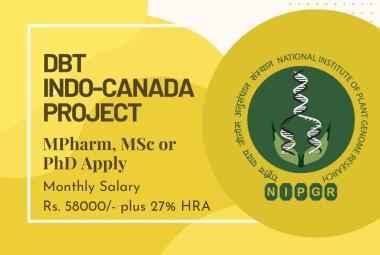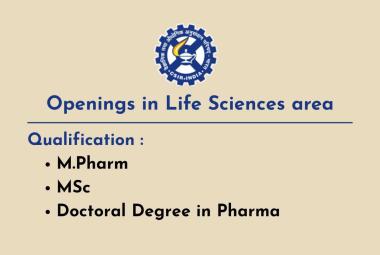About Authors:
Jatin Sharma*, Dharmendra kumar{Sr. Lecturer}, Amarjeet Singh
School of Pharmaceutical Sciences Shobhit University,
Meerut
Abstract
Objective: Clerodendrum serratum.(L)belong to family Verbenaceae a have long history as source of potential chemotherapeutic agents in Ayurvedic and Unani system of medicine.Clerodendrum serratum (L), Ban-Bakri is commonly known as Bharangi in Hindi and Bhargavi in Sanskrit. It is found from 1000 to 1800 meters above mean sea level. It is distributed in warmer regions of Deccan and Carnatic, West Coast districts of Tamil Nadu, Kumaon, Sikkim, and Assam.Clerodendrum serratumis one of the important plants from traditional system of medicine found all over the world.
Keyfinding: This review is intended to provide the currently available information on traditional and local knowledge, ethnobotanical and ethnomedical issues, identification of pharmacologically important molecules, and biochemical and pharmacological studies of this useful plant.
Summary: Clerodendrum serratum has been cited in many indigenous systems of health care for the treatment of variety of disorders. An extensively used as folk medicines for years have been investigated for their chemical constituents and biological activity to confirm these traditional claims.
[adsense:336x280:8701650588]
Reference Id: PHARMATUTOR-ART-1149
1. Introduction
Indian system of health care involves a holistic view of human health. Ayurvedic treatment of a disease consists of salubrious use of crude drugs, diet and certain practices. Plants are being used in medicine from the time immemorial because they have fitted the immediate personal needs, they are accessible and inexpensive. Around 1400 plants are currently used in various ayurvedic preparations.Plants have long been a very important source of new drugs and many plant species have been screened to see if they contain substances with therapeutic activity (The Ayurvedic Pharmacopoeia of India, 2007).Clerodendrum serratum (L.) Moon belong to family Verbenaceae is a small perennial shrub growing in moist deciduous forests and occasionally in plains of peninsular India and the Western and Eastern Himalayas up to 1,400 feet above sea level. The leaf and root of this plant have great medicinal value. Rootbark contains mainly sapogenins (Rangaswami and Sarangan et al. 1969), while leaves contain flavonoids and phenolic acids (Rastogi et al. 1999). The root has been traditionally used in Ayurveda and Siddha systems of medicine for treatment ofchronic bronchial asthma and other respiratory diseases, different types of fevers and skin infections. It is one of the ingredients of the ayurvedic drug. ‘‘Kasadamana,’’ an effective expectorant and antitussive remedy (CSIR 2001).Plant-derived drugs occupy an important place in both traditional and modern medicine (Akerelo et al. 1993; Baker and Alvi et al. 2004). Ethnopharmacological and ethnobotanical knowledge are percolating down to these days among the tribal population,but much of this information is empirical at best, and lacks preclinical scientific validations (Houghton et al. 1995 and Fong et al. 2002).While working in a national programme wherein the Indian biodiversity is being screened in new biology-based disease models with a view to reassessing traditional wisdom, we came across the plant Clerodendrum serratum as a potential candidate for various diseases.( Shah, 2003).
2.Morphological features
Clerodendrum serratum (L.) was growing wild in the ravinea of Sivaa River near Sanoti village. Locally this species is called furedetu. Clerodendrum serratum (L.) isa common shrub and grows along with Lantana caora, Acacia nilotica (Sharma and Katewa et al. 1993).
The genus is native to tropical and warm temperate regions of the world, with most of the species occurring in tropical Africa and Southern Asia but with a few in the tropical Americas Northern Australaia, and a few extending north into the temperate zone in Eastern Asia. Common names include glorybower, bagflower and bleeding-heart (Sharma and Katewa et al. 1993).
Lateral roots measuring about 3.8 mm thick. Root roughly circular in cross sectional outline with shallow fissures and thin membranous peelings phyllem tissue (Narayanan et al. 2002).Old roots, ranging in thickness from 3-7cm were examined. Wood hard, heavy, light brown, fine-grained smooth texture; no taste, no odour. Pores minute, not visible to the naked eye; growth rings fairly distinct and visible to the naked eye (Narayana et al. 2002).
The leaves are simple decussate opposite, ternate or apically clustered and variable in size. The leaves are opposite oblong or elliptic, acute, coarsely and acute base (Rueda et al. 1993).Venation pattern are variable, although most species are bronchidodromous, sometimes only well above the base. The angle of divergence of secondary veins from the mid vein is variable but in most leaves is acute. The number of secondary vein can vary from 5 to 9 on each side of the mid vein. The variability in petiole length is 0.1 to 0.7cm. Leaves are elevated scares. The genus varies from glabrous. Pubscent with simple hairs clays, petiole, leaf and twig. Pubescence is usually of different densities within as pieces. The inflorescence is both axillary and terminal sometimes on the small plant. The inflorescence range from 1-39 cm long and 1-25 cm wide. The inflorescence maybe cymes, panicles or solitary flowers. The calyx varies in size ranging from 2-18 mm long. It is gamosepalous, commonly green, and less often red or white, always companulate, elliptic, 5 lobed, variously pubscent. The size of corolla ranges from 6 to 4 mm long to 3 to 20 mm wide. It is gamopetalous hypocrateriform and may be white red, pink or purple. The fruits is drupaceous, mostly sublobose or obovoid, glaborous usually sepating at maturity in to pyrenes. Fruits range from 5 to 14 mm long and 5 to 8 mm wide. Seeds are four lobed, they are oblong with little no endosperm (Rueda et al. 1993).
3.Traditional and local uses
Root is pungent, bitter, acrid, dry, heating, anti-inflammatory, digestive, carminative, depurative, expectorant, antispasmodic, stimulant, appetizer and anthelmintic. It is used clinically in treatment of bronchitis, asthma, fevers, blood disease, tumours, inflammations, burning sensation, epilepsy, malaria, ulcer and wounds (Shah, 2003); (Krishna et al. 2007). Leaves are used in fever and hiccough. Its boiled leaves are used in cephalgia and opthalmia where as its boiled seeds in butter milk is used as aperients, in dropsy and in catarrhal affection of lungs (Shah, 2003). Root bark contains mainly sapogenins (Rangaswami and Sarangan et al. 1969), while leaves contain flavonoids and phenolic acids (Rastogi et al. 1999).It also forms an ingredient of the Siddha drug, ‘‘Siruteku,’’with significantly high antibacterial properties (Narayanan et al. 2004).
NOW YOU CAN ALSO PUBLISH YOUR ARTICLE ONLINE.
SUBMIT YOUR ARTICLE/PROJECT AT articles@pharmatutor.org
Subscribe to Pharmatutor Alerts by Email
FIND OUT MORE ARTICLES AT OUR DATABASE
4.Chemical constituents
A series of publications have appeared on the structural characterization of the secondary metabolites of the plant. Most of the investigators studied the flowers, though there are a few publications on the constituents of the stems and leaves also.The compounds identified are predominantly phenolics, particularly hydrolysable tannins and flavonoids. Glucose and D-mannitol, Oleanolic acid, Queretaroic acid and Serratagenic acid are present in root bark of Clerodendrum serratum (Shah, 2003) whereas Stimasterol, α-spinasterol, luteolin, luteolin-7-0 glucuronide, apigenin, baicalin and scutellarin 7-0 glucuronide are found in leaf (Krishna et al. 2007).
|
Oleanolic Acid Mannitol |
Apigenin |
|
Luteonil |
Biacalin |
5 .Biological activity
Systematic pharmacological and biochemical investigations of the traditional remedies based on the plant and its parts substantiated many of the earlier empirical observations. The scope of newer therapeutic management has been extended with studies on recently identified molecules that target specific biological receptors and/or display specific activity.
5.1.Traditional remedies
Ayurvedic science has propagated the use of Clerodendrum serratum as effective treatment against asthma, bodyache, cholera, eye disorder, ulcers, snake-bite, wound, tuberculosis and epilepsy. It has antibacterial, antihistaminic, hepatoprotective, antipyretic, antinociceptive and anti-inflammatoryRoot is pungent, bitter, acrid, dry, heating, anti-inflammatory, digestive, carminative, depurative, expectorant, antispasmodic, stimulant, appetizer and anthelmintic. It is used clinically in treatment of bronchitis, asthma, fevers, blood disease, tumours, inflammations, burning sensation, epilepsy, malaria, ulcer and wounds (Shah, 2003; Krishna et al. 2007). Leaves are used in fever and hiccough. Its boiled leaves are used in cephalgia and opthalmia where as its boiled seeds in butter milk is used as aperients, in dropsy and in catarrhal affection of lungs (Shah, 2003) .It is an excellent antihistaminic and antiallergicagent (Gupta and Gupta et al. 1968; Gupta et al. 1967) as well as an immunomodulator (Juvekar, 2006) and also has antinociceptive and anti-inflammatory properties (Narayanan et al. 1999).Clerodendrum serratum,its methnolic extract exhibit significant anticancer activity as compared to aqueous extract. (Zalke et al. 2010).Antibacterial activity of Clerodendrum serratum .L(Vidya S.Met al. 2010).
5.2.Isolated molecules
New biology-based preclinical observations of some of the complex macromolecules, isolated from the flowers as well as leaves of Clerodendrum serratum (L.)are increasingly becoming available in recent time. The unique macrocyclic structure with an appropriate molecular size appears to confer special biological property to this group of compounds. A series of publications have appeared on the structural characterization of the secondary metabolites of the plant. Most of the investigators studied the flowers, though there are a few publications on the constituents of the stems and leaves also.The compounds identified are predominantly phenolics, particularly hydrolysable tannins and flavonoids. Glucose and D-mannitol, Oleanolic acid, Queretaroic acid and Serratagenic acid are present in root bark of Clerodendrum serratum (Shah, 2003) whereas Stimasterol, α-spinasterol, luteolin, luteolin-7-0 glucuronide, apigenin, baicalin and scutellarin 7-0 glucuronide are found in leaf (Krishna et al.2007). β-sitosterol, 24(s)-ethyl cholesta-5, 22, 25-trien-3β-ol, 5-hydroxy-7, 4-dimethoxy flavones, luteolin, apigenin, scutellarien and ursolic acid had been isolated from the stem ofClerodendrum serratum . These seven isolated compound were characterized by chemical and spectroscopic means (Ganapaty et al. 1997). Clerodendrum serratum containIridane—88.89% (Wei et al. 2000; Yang et al. 2000). Phenylpropanoid glycoside, serratumoside A, was isolated from the aerial parts of Clerodendrum serratum(Hui YANG et al. 2000). Two new iridoid glucosides, named 7 β -coumaroyloxyugandoside and 7 β-cinnamoyloxyugandoside were isolated from the leaves of Clerodendrum serratum (Xiao Mei WEI et al. 2000).
6.Conclusion
Clerodendrum serratum has been cited in many indigenous systems of health care for the treatment of variety of disorders. An extensively used as folk medicines for years have been investigated for their chemical constituents and biological activity to confirm these traditional claims.The plant is reported to have activities against a wide spectrum of disorders which includes many life-threatening diseases.Still there are many species of the genus having a potential towards many disorders in their unexplored fold.
7. References
• Amrutesh, S., 2007. Dentistry and Ayurveda-III (basics – ama, immunity, ojas, rasas, etiopathogenesis and prevention). Indian Journal Dent Res 3, 112-119.
• Bhujbal, S.S., Kewatkar, S.M.K., More, L.S., Patil, M.J., 2009. Antioxidant effects of roots of Clerodendrum serratum. Pharmacognosy Research 1, 294-298.
• Devi, P.R., Laxmi, V., Charulata, C., Rajyalakshmi, A., 2004. Alternative medicine – a right choice for male infertility management. International Congress Series 1271, 67-70.
• Ganapty, S., Naidu, K.C., Babu, J.G., 1997. Phytochemical examination of the stem of Clerodendrum serratum. Indian Drugs 34, 208-209.
• Farnsworth, N.R., Graham, J.G., Quinn, M.L., Fabricant, D.S., 2000. Plants used against cancer – an extension of the work of Jonathan Hartwell. Journal of Ethnopharmacology 73, 347-377.
• Houghton, P.J., Osibogun, I.M., 1993. Flowering plants used against snakebite. Journal of Ethnopharmacology 3, 1-29.
• Knnabiran, B., Vedantham, T.N.C., Nair, A.G., 1979. Polyphenolic components of Clerodendrum serratum. Current Science 48, 440-441.
• Krishna, V., Vidya, S. M., Manjunatha, B.K., Ahmed, M., Singh, J.S.D., 2007.Evaluation of hepatoprotective activity of Clerodendrum serratum. Indian Journal Experimental Biology 45, 538-542.
• Krishna, V., Naika, H.R., 2008. Plant regeneration from callus culture of Clematis gouriana Roxb.-a rare medicinal plant. Trunk Journal Biology 32, 99-103.
• Narayanan, N., Thiruganansambantham, P., Viswanatham, S., Rajarajan, S., Sukumar, E., 2004. Comparative antibacterial activities of Clerodendrum serratum and Premna herbacea roots. Indian Journal of Pharmaceutical Sciences, 453-457.
• Narayanan, N., Thirugnanasambantham, P., Viswanathan, S., Sukumar, E., Jeyaraman, P., 2002. Pharmacognostical studies on the roots of Clerodendrum serratum. Pharmaceutical Biology 40, 362-368.
• Sajem, A.L., Gosai, K., 2006. Traditional use medicinal plants by the Jaintia tribes in North Cachar District of Assam, India. Journal of Ethnobiology and Ethnomedicine 2, 1-7.
• Sharma, S.K., Katewa, S.S., 2007. Addition to the flora of Rajasthan from southern arravalis, Zoo Print Journal 10, 28-67.
• Sharma, R., Rai, S.K., Purshottam, D.K., Jain, M., Chakarabarty, D., Awasthi, A., Nair, K.N., Sharma, A.K., 2009. In vitro Clonal Propagation of Clerodendrum serratum Linn a rare and threatened medicinal plant. Acta Physiologiae Plantarum 31, 379-383.
• Sun, H.D., Yang, H., Hou, A.J., Mei, S.H., Peng, L.Y., 2000. A new phenylpropanoid glycoside from Clerodendrum serratum. Chinese Chemical Letters 11, 323-32
• Savithramma, N., Sulochana, C., Rook, M., 2007. Ethnobotanical survey of plants used to treat asthma Andra Pradesh, India. Journal of Ethnopharmacology. 103, 54-61.
• Steane, D.A., Mabberley, D.J., Scotland, R.W., Wagstaff, S.J., Reeves, P.A., Olmstead, R.G., 1997. Phylogenetic relationship of Clerodendrum s infrared from chloroplast D.N.A. Systemic Botany 22, 229-243
• Vasavad, S.A., Sachdev, K.S., Joseph, A.D., 1964. Antihistaminic activity of Clerodendrum serratum. The Indian Journal Pharmacy 105-106.
• Viswnathan, S., Narayanan, N., Thirughanasambantham, V., 1999. Antinociceptive, anti-inflammatory and antipyretic effects of ethanolic extract of Clerodendrum serratum roots in experimental animals. Journal of Ethnopharmacology 65, 237-241.
• Venkartaraman, B.V., Roopa, R., Pudmalatha, K., 2000.Effect of DLD-72, and DLH-71 B (Polyherbar formulations) on rat mesenteric mast cell degranulation. Indian Journal of Pharmacology 32, 7-10.
• Vidya, 2005. Wound healing activity of root of leaf extract of Clerodendrum serratum. Indian Drugs-Bombay 42, 609-613.
• Zalke, S.A , Kulkarni, V.A , Shirode S.D , Duraiswamy,2010. Invivo anticancer activity of Clerodendrum serratum. Research Journal of Pharmaceutical, Biological and Chemical Sciences 1, 89-98.
• Roldao, F.D.E., Witaicenisa, A., Seito, L.N., Hiruma-Lima, C.A., Stasi, L.C., 2008. Evaluation of the antiulcerogenic and analgesic activities of Cordia verbenacea DC. (Boraginaceae). Journal of Ethnopharmacology 119, 94-98.
• Shah R., 2006. Nature’s Medicinal plant of Uttaranchal. Gyanodaya prakhasan, Nainital, 330-331.
• Sharma SK, Katewa SS., 2007. Addition to the flora of Rajasthan from southern arravalis, Zoos print journal.10, 28-67.
• Wei MX, Zhu XQ, Chen CJ, Cheng LD,2000.Two new Iridoid Glucosides from Clerodendrum serratum. 11, 415-416.
NOW YOU CAN ALSO PUBLISH YOUR ARTICLE ONLINE.
SUBMIT YOUR ARTICLE/PROJECT AT articles@pharmatutor.org
Subscribe to Pharmatutor Alerts by Email
FIND OUT MORE ARTICLES AT OUR DATABASE









